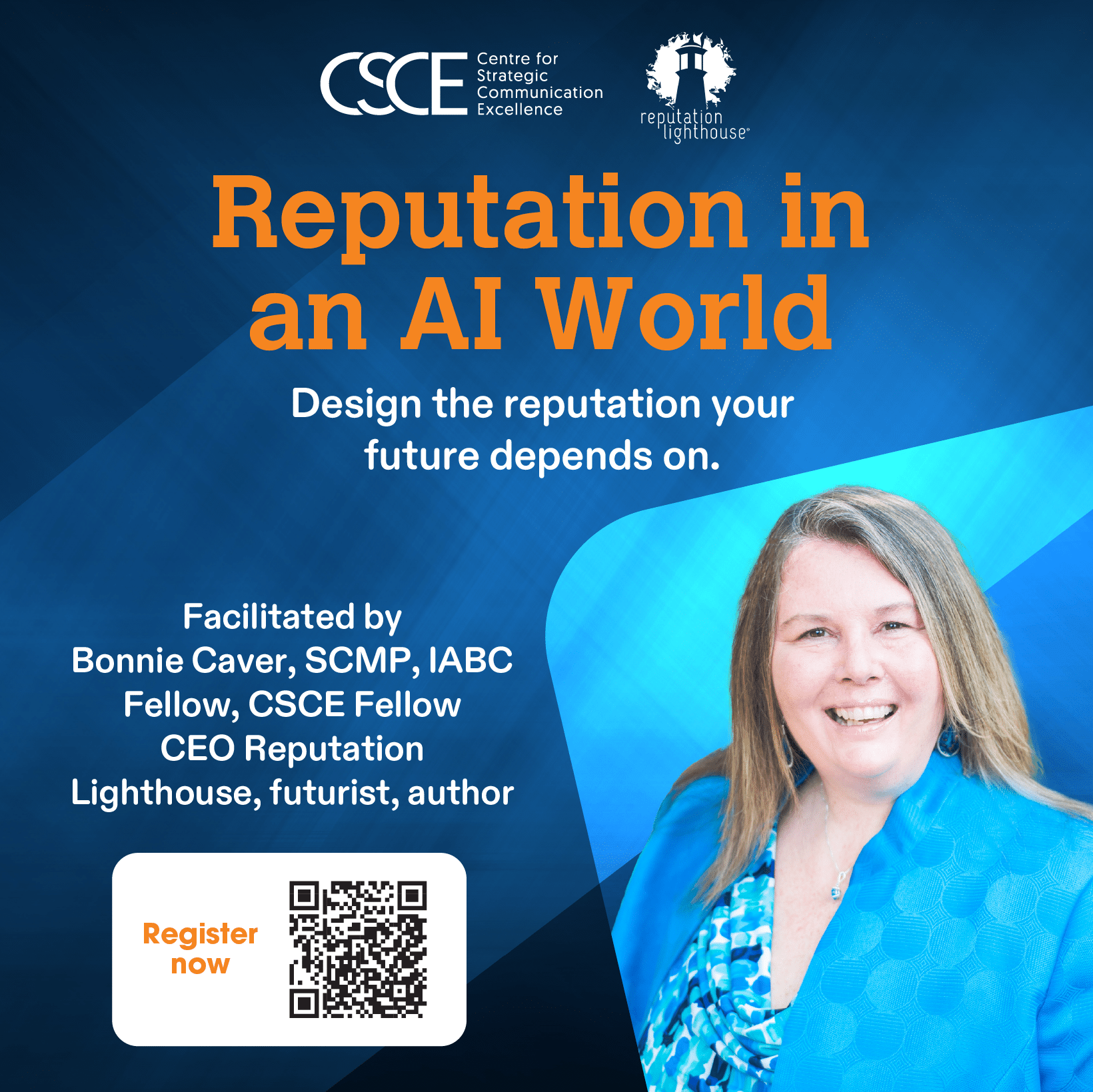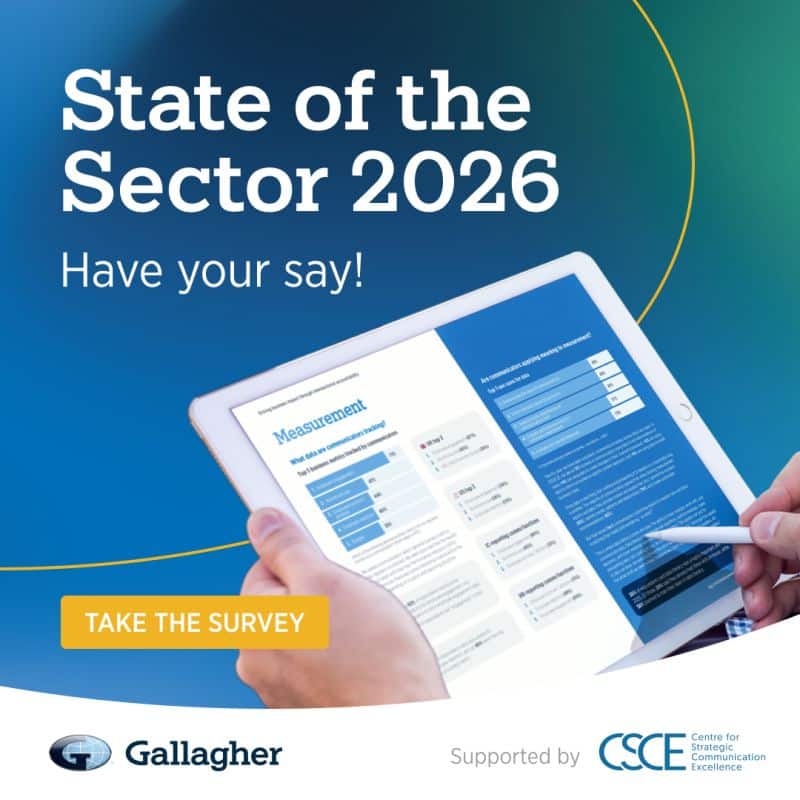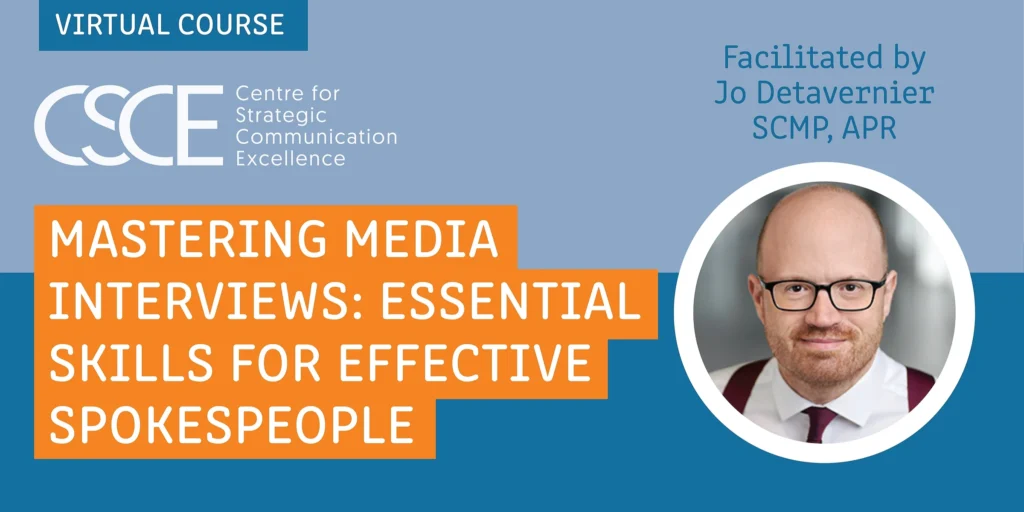Reputation used to be something leaders believed they could manage. It sat quietly in the background, shaped by a predictable mix of experiences, communication, and time. You earned credibility slowly and, if you were delivering on your promises, earned equity for when you failed. But we have undergone a fundamental shift. The speed of information, the rise of intelligent technologies, and the rapid erosion of institutional and societal trust have fundamentally changed the physics of reputation. We are now operating in a world where trust is not the default, where skepticism arrives before the facts, where the loudest voices control the narrative, and where the line between human and machine is unrecognizable.
The Trust Crisis Has Outpaced Our Systems
The data tells a sobering story. In the early 1960s, people believed institutions would do the right thing most of the time. Of course, that is when information was controlled by limited news and information resources. These were the gatekeepers of information. Today, surveys from around the world show people instead start from a position of distrust, not just of governments or the media. While we may boast that some of the most trusted entities are companies and their leaders, according data from sources like the Edelman Trust Barometer; however, that is not genuine trust. It’s merely the best of the worst. In reality, distrust also applies to companies, leaders, platforms, and increasingly the information we see with our own eyes. When researchers recently asked people whether they believed they could detect AI misinformation, the majority said no. Many believed they had already been fooled by it. That is not a small societal tremor. It is a foundational crack running through the center of how people form perception in the first place.
This collapse of trust sits at the exact moment when CEOs say reputation and risk are among their highest priorities. Nearly half of a company’s reputation is attributed to its CEO, according to Weber Shandwick’s 2023 global research. Almost the same percentage of market value is tied to that reputation. That is why we think of reputation as a currency all its own. Leaders know this. They also know they are operating in an environment where confidence is falling, volatility is rising, and only a small fraction believes their marketing, communication, and public relations functions are equipped for what lies ahead. It is rare to find such alignment between perceived importance and perceived unpreparedness. That gap itself is a reputational warning signal.
Reputation Is No Longer What People Think. It’s What Systems Detect.
AI adds yet another layer. Reputation is no longer shaped only by what people say or believe. It is shaped by what algorithms infer. Every communication, every inconsistency, every policy change and internal signal becomes data. AI systems scan it all, classify it, summarize it, and then present a version of the organization to the world. Algorithms do not care about your intention. They do not care about verified voices. They care about data patterns. And to AI, those patterns become truth. If you communicate one thing and behave another, the inconsistency becomes part of the machine-learned story of your organization. If your culture contradicts your brand promises, the contradiction becomes visible faster than it did when humans were the only interpreters. If your pace of change lags your industry’s pace, the lag becomes a predictive indicator that works its way into stakeholder expectations and even market behavior. If bad actors control your narrative and you don’t correct the record quickly and factually with an equally powerful voice, that becomes the story AI has for you. And remember, AI does not unlearn.
This is why reputation can no longer be understood as something you respond to. It must be something you design. And once designed, something you protect with the same sincerity you would bring to cybersecurity, financial governance, or safety. Reputation is not a soft concept. It behaves like infrastructure. It either holds the weight of your decisions, or it buckles under pressure.
The System Behind Trust
When Reputation Lighthouse looks at how organizations build or erode trust, we think about the interplay of brand, culture, communication, connections, and change. These elements form a system, and the system is where reputation truly lives. A company can have a brilliant brand strategy, but if its internal culture contradicts that story, the misalignment becomes visible and searchable. A leader can communicate with clarity, but if the organization avoids necessary change or had failed change initiatives, that clarity eventually reads as rhetoric. Connections with stakeholders, from employees to partners to communities, can be strong, but if communication is inconsistent or opaque, those relationships weaken. Trust is the cumulative output of these forces. When they reinforce each other, reputation strengthens. When they pull apart, trust dissipates. Quickly.
Designing for Trust Before You Need It
The challenge today is that AI accelerates exposure. What once took months to surface can now appear in hours. A misjudged comment, a poor decision, an internal email that escapes its intended audience, a cultural inconsistency that employees talk about online, or a synthetic video that looks real enough to raise doubt, each of these moments can rapidly bend the story of an organization. Even when the content is false, the suspicion becomes real. People now assume manipulation before they assume truth. They begin from a place of non-trust, which means organizations must do more to earn credibility than they did in the past.
This is the part many leaders underestimate. You cannot wait for trust to be tested before you strengthen the system behind it. You cannot assume that good intentions will translate into positive perception. And you cannot rely on message control in a world where message interpretation is increasingly handled by systems that work at a speed and scale humans cannot match.
What you can do is design systems that make trust the natural outcome of how your organization operates. You can align your promise with your proof so that the story you tell externally is reinforced internally. You can ensure that communication is fast, clear, and grounded in transparency rather than spin. You can create cultures where people experience the values you promote, not the version written in the employee handbook. You can understand how AI tools are interpreting your organization and choose to influence and monitor those signals rather than ignore them. And you can make change a core competency, so your organization is never caught flat-footed when the environment shifts.
What Comes Next
None of this is easy, but it is necessary. Reputation is no longer a passive perception living in the minds of your stakeholders. It is an active system of value, shaped continuously by the choices you make and the signals you send. Leaders who understand this will be far better equipped to navigate the uncertain, intelligent, high-velocity world unfolding around us.
And perhaps most importantly, they will be building organizations whose reputations are not defined by crisis, reaction, or algorithmic interpretation, but by the integrity of the systems they intentionally designed to create a currency for growth and corporate value.
APAC/North America
3 December 2025, at 7:00 PM CT
4 December 2025, at 12:00 PM AEDT
North America/Europe
8 December 2025, at 9:00 AM CT
8 December 2025, at 4:00 PM CET
Reputation has become an intentionally designed system of value, and this session shows you how to architect, protect, and accelerate it in an AI-driven world where trust, transparency, and strategic reputation management are essential.
Reputation in an AI World







